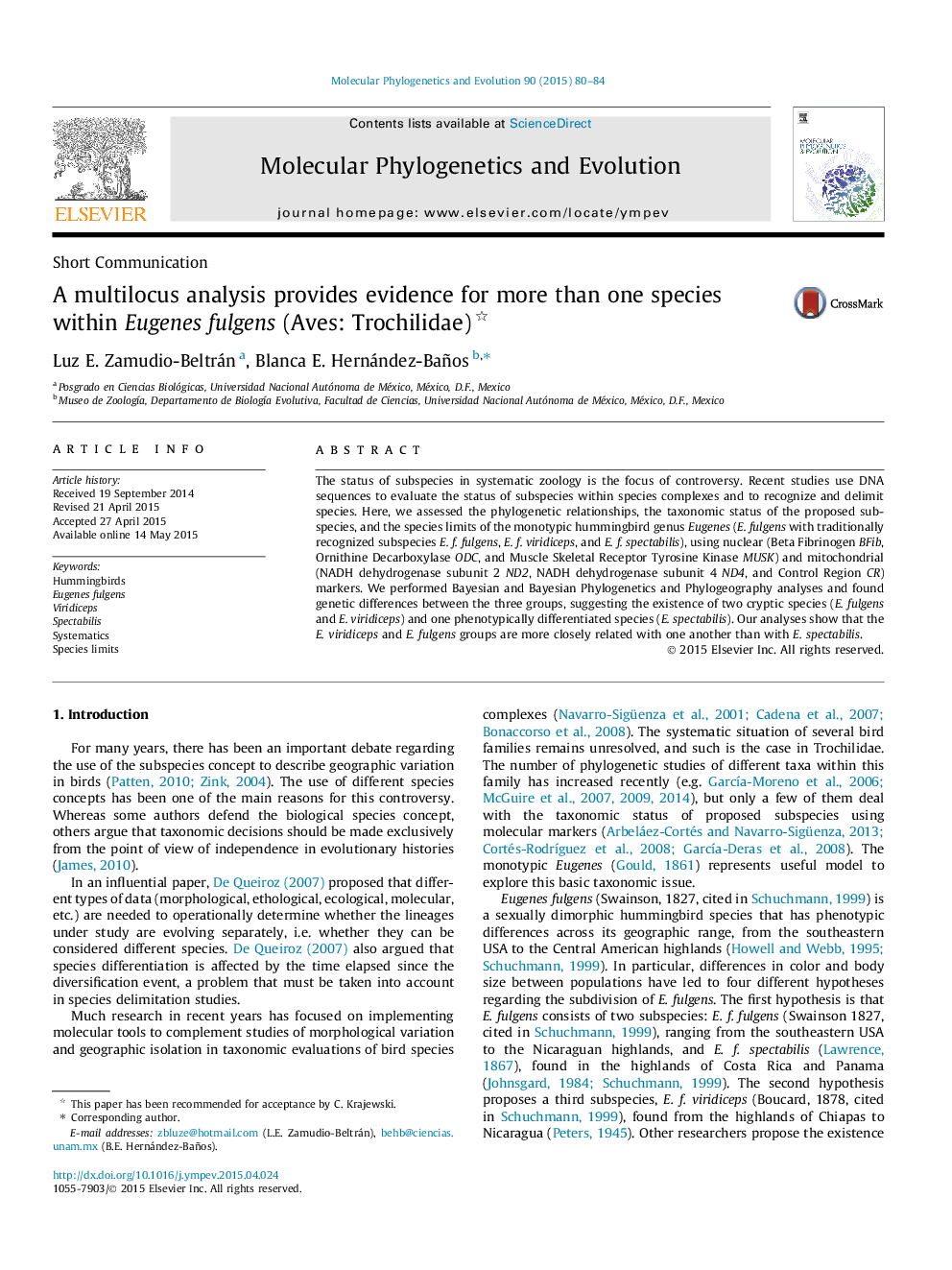| Article ID | Journal | Published Year | Pages | File Type |
|---|---|---|---|---|
| 2833773 | Molecular Phylogenetics and Evolution | 2015 | 5 Pages |
•We assessed the phylogenetic relationships and the taxonomic status of Eugenes fulgens.•We used nuclear and mitochondrial markers to find the limits of the species in Eugenes fulgens.•We found genetic differences between E. fulgens, E. viridiceps and E. spectabilis.•E. viridiceps and E. fulgens groups are more closely related with one another than with E. spectabilis.
The status of subspecies in systematic zoology is the focus of controversy. Recent studies use DNA sequences to evaluate the status of subspecies within species complexes and to recognize and delimit species. Here, we assessed the phylogenetic relationships, the taxonomic status of the proposed subspecies, and the species limits of the monotypic hummingbird genus Eugenes (E. fulgens with traditionally recognized subspecies E. f. fulgens, E. f. viridiceps, and E. f. spectabilis), using nuclear (Beta Fibrinogen BFib, Ornithine Decarboxylase ODC, and Muscle Skeletal Receptor Tyrosine Kinase MUSK) and mitochondrial (NADH dehydrogenase subunit 2 ND2, NADH dehydrogenase subunit 4 ND4, and Control Region CR) markers. We performed Bayesian and Bayesian Phylogenetics and Phylogeography analyses and found genetic differences between the three groups, suggesting the existence of two cryptic species (E. fulgens and E. viridiceps) and one phenotypically differentiated species (E. spectabilis). Our analyses show that the E. viridiceps and E. fulgens groups are more closely related with one another than with E. spectabilis.
Graphical abstractFigure optionsDownload full-size imageDownload as PowerPoint slide
